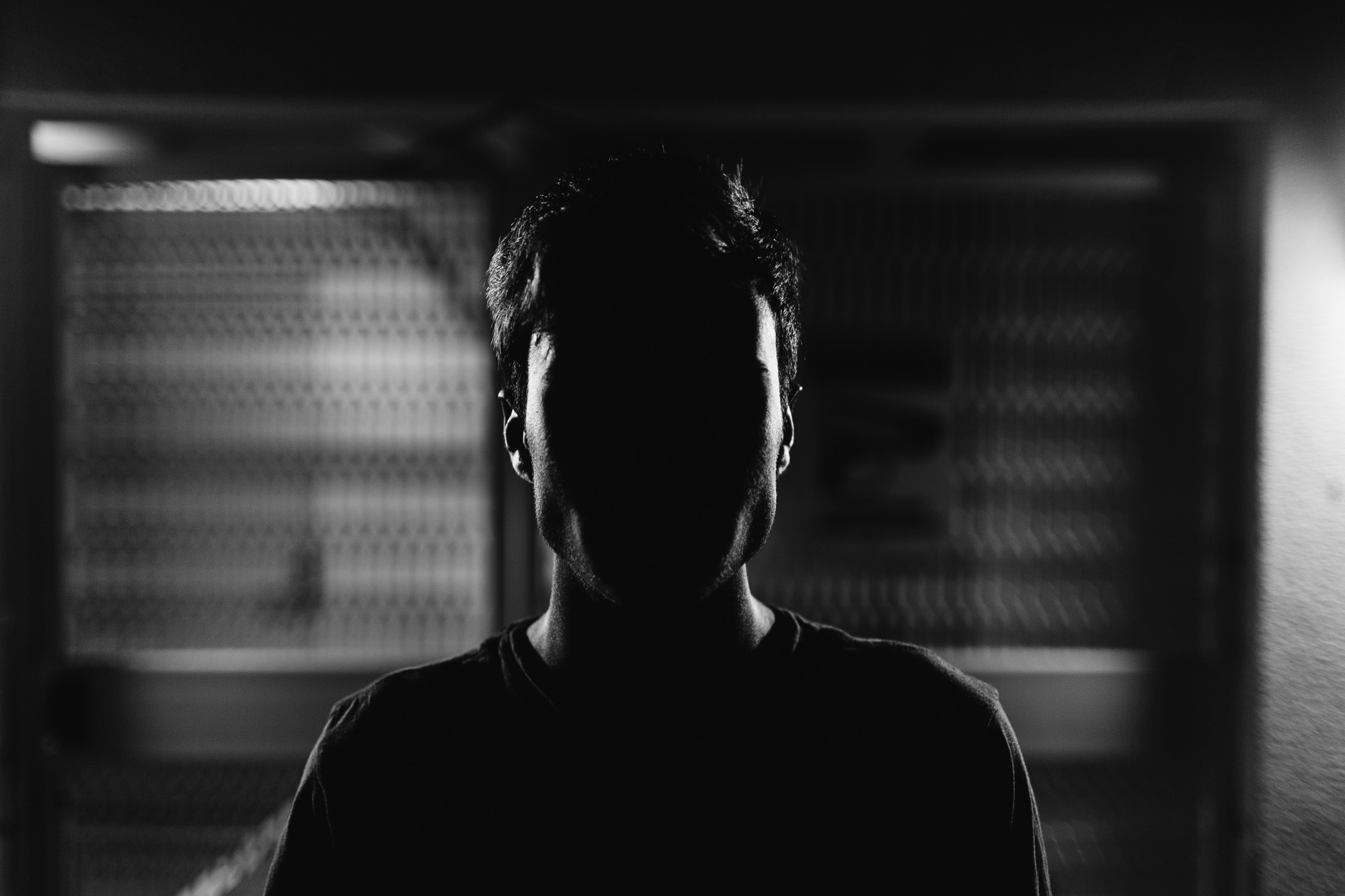The fear of darkness is a common and deeply rooted fear experienced by many humans, ranging from childhood to adulthood. Known as nyctophobia, this fear of the dark is not always linked to the absence of light itself, but rather the fear of what may be lurking unseen in the darkness. Whether rational or irrational, the fear of darkness is deeply embedded in the human psyche, shaped by evolutionary factors, psychological mechanisms, and cultural influences.
In this article, we will explore why humans are often scared of the dark, looking into its evolutionary origins, psychological triggers, and the ways in which cultural factors and media have shaped and amplified this fear.
1. Evolutionary Origins of the Fear of the Dark
The fear of the dark has deep evolutionary roots, dating back to our early ancestors. For much of human history, the night represented a time of increased vulnerability. Before the advent of artificial lighting and modern civilization, humans were at the mercy of predators during the nighttime, unable to see well in the dark. In these ancient environments, nocturnal predators such as large cats, wolves, or other carnivores posed a significant threat to human survival.
Humans, who have relatively poor night vision compared to many predators, had to rely on heightened alertness and their fear response to stay safe during the night. This instinctive fear kept our ancestors on guard, making them more cautious and vigilant during periods of darkness, when they were more vulnerable to attack. While modern humans no longer face these types of physical dangers on a daily basis, the fear of the unknown that lies in the dark persists as an evolutionary remnant.
Evolutionary Benefits:
- Survival Mechanism: Heightened awareness during darkness helped early humans avoid predators.
- Vigilance: The fear of the dark kept humans alert and ready to react to potential dangers.
- Fight-or-Flight Response: Instinctive fear triggered adrenaline, allowing for quicker reactions to threats.
2. The Fear of the Unknown
The dark is often associated with the unknown, and humans naturally fear what they cannot see or understand. In darkness, our visual perception is diminished, leaving us unable to assess our surroundings clearly. This inability to visually detect potential threats, even in safe environments, heightens feelings of vulnerability and anxiety.
The fear of the unknown plays a significant role in why humans are scared of the dark. Our brains are hardwired to identify and respond to patterns and stimuli. When those patterns are disrupted, such as in the absence of light, our minds can start to fill in the blanks with imagined threats. This phenomenon, known as pareidolia, occurs when the brain perceives familiar shapes or figures where there are none. For example, shadows in the dark can appear as menacing figures, and unfamiliar sounds can seem like approaching dangers.
Psychological Effects:
- Increased Anxiety: The inability to see clearly in the dark leads to a heightened sense of vulnerability.
- Pareidolia: The brain tends to fill in gaps with imagined threats, leading to fear of perceived dangers.
- Fear of the Unknown: Darkness symbolizes uncertainty and lack of control, which fuels anxiety.
3. Childhood Development and Fear of the Dark
Fear of the dark is particularly common during childhood, often beginning around the age of two or three. During this stage, children are developing their imagination and may become increasingly aware of the potential dangers in the world. Their vivid imaginations, combined with a lack of full understanding of reality, can cause them to fear the dark. For many children, the darkness becomes a breeding ground for imaginary threats such as monsters, ghosts, or other supernatural entities.
In some cases, childhood fears of the dark are reinforced by cultural narratives or media. Stories of monsters hiding under the bed or in closets, along with exposure to scary movies or tales, can strengthen a child’s belief that danger lurks in the shadows. Additionally, childhood fears of the dark may also stem from the loss of visual stimuli, where familiar objects take on eerie or unknown forms when seen in low light.
Childhood Factors:
- Imagination: Children often imagine monsters or dangers in the dark, intensifying their fear.
- Lack of Control: The dark represents an environment that children cannot fully understand or control.
- Media Influence: Stories, movies, and cultural myths about night-time dangers contribute to the fear.
4. Psychological and Biological Responses to Darkness
When humans are placed in dark environments, certain biological and psychological responses are triggered. Darkness signals the brain to release melatonin, the hormone that regulates sleep. While melatonin itself doesn’t cause fear, it slows the body down, making individuals feel more tired, which can amplify feelings of vulnerability. The darkness also reduces visual input, causing the brain to focus more on sounds and sensations, which can be misinterpreted as threats.
The amygdala, the part of the brain responsible for processing fear, becomes more active when individuals are in the dark. In some cases, this increased activity can lead to hypervigilance, where small stimuli, such as a creak in the floorboards or rustling leaves, are interpreted as potential dangers. This is why even adults, in seemingly safe environments, can feel uneasy in dark spaces.
Biological Responses:
- Melatonin: The release of melatonin in the dark slows the body down and can heighten vulnerability.
- Amygdala Activation: Increased activity in the amygdala makes individuals more sensitive to threats.
- Sensory Focus: Reduced visual input causes the brain to focus on sounds, often interpreting them as dangers.
5. Cultural Influences and Media
Fear of the dark is often reinforced by cultural narratives and media. Throughout history, darkness has been associated with danger, evil, and the unknown. In many cultures, darkness is a symbol of death, mystery, and malevolent forces. Folklore, mythology, and religious beliefs have all contributed to the idea that darkness is something to be feared. From ancient stories of night-time spirits to modern horror films, the association between darkness and danger has been passed down through generations.
The portrayal of darkness in movies, literature, and television also plays a significant role in shaping our fears. In horror films, for instance, darkness is often used as a tool to create suspense and anticipation of danger. This has led many people to associate dark spaces with the presence of supernatural or malevolent forces. The more we are exposed to these media portrayals, the stronger our subconscious association between darkness and fear becomes.
Cultural and Media Influences:
- Folklore: Cultural myths and stories often depict the dark as a time of danger or evil.
- Religious Symbolism: Darkness is sometimes associated with death, evil forces, or the afterlife.
- Horror Films: Media frequently uses darkness as a tool to build suspense and instill fear.
6. Fear of Isolation
Darkness can often be associated with isolation, which can trigger feelings of loneliness or helplessness. In the dark, we may feel cut off from the outside world or disconnected from other people, which can heighten feelings of fear. This sense of isolation can cause us to feel as though we are left vulnerable and unprotected from dangers, whether real or imagined.
The fear of being alone in the dark may stem from the evolutionary need to be part of a group for safety. Early humans were safer when they stayed together, especially at night, when predation risks were high. In modern times, the darkness can still evoke these same feelings of vulnerability and isolation, even when we are physically safe.
Psychological Effects:
- Loneliness: The dark can amplify feelings of isolation, increasing fear.
- Helplessness: Darkness can make us feel powerless or unable to defend ourselves.
- Evolutionary Need for Safety in Groups: Being alone in the dark triggers ancient instincts for group safety.
7. Association with Negative Experiences
For some individuals, a fear of the dark may be linked to past traumatic experiences. If someone has experienced a frightening or dangerous event in the dark—such as a break-in, an accident, or even a particularly frightening nightmare—they may develop a lasting fear of darkness. The brain tends to associate certain environments or triggers (in this case, darkness) with past traumas, causing heightened anxiety when exposed to the same conditions again.
In these cases, the fear of the dark may not be a general fear but a specific phobia tied to trauma. Therapy, such as cognitive-behavioral therapy (CBT), can help individuals overcome these fears by breaking the associations between darkness and danger.
Trauma-Related Fear:
- Traumatic Events: Past experiences in the dark can trigger lasting fears.
- Conditioning: The brain associates darkness with fear or danger based on past events.
- Phobias: Specific fears of the dark may develop due to trauma and require treatment.
Overcoming the Fear of the Dark
For many people, the fear of the dark subsides naturally with age or exposure. However, for those who experience intense fear or nyctophobia, there are ways to address and overcome this fear:
- Gradual Exposure: One effective way to reduce fear is through gradual exposure to darkness. This involves slowly increasing the amount of time spent in dark environments, allowing the mind to become accustomed to the darkness and proving that no harm will come.
- Cognitive Behavioral Therapy (CBT): CBT is a proven method for overcoming fears and anxieties by helping individuals reframe their thoughts and confront irrational fears in a controlled and therapeutic manner. A therapist can help individuals identify the root cause of their fear and work through it step by step.
- Relaxation Techniques: Learning relaxation techniques such as deep breathing, mindfulness, and meditation can help calm the mind and body when feelings of fear arise in the dark. These techniques can reduce the fight-or-flight response and help individuals feel more in control.
- Creating a Comfortable Environment: For those who fear the dark in their home, creating a comforting and familiar environment can reduce anxiety. This could involve using soft lighting like nightlights, adding comforting scents (lavender, for example), or engaging in relaxing activities like reading before bed.
- Challenge Negative Thoughts: Often, fear of the dark is rooted in irrational thoughts about what could be lurking. By actively challenging these thoughts and reminding oneself of the safety of their surroundings, individuals can begin to shift their mindset. This process might involve asking questions such as, “What’s the likelihood that my fear is based on reality?” or “Have I ever been harmed in the dark before?”
Conclusion
The fear of the dark is a complex and deeply ingrained phenomenon, shaped by a combination of evolutionary survival instincts, psychological responses, and cultural influences. While modern humans no longer face the same physical threats as our ancestors did in the dark, the psychological and biological mechanisms that kept early humans safe still influence our reactions today. The fear of darkness stems not only from the unknown but also from the lack of control and heightened vulnerability that the absence of light brings. Our imagination, fueled by both natural instincts and cultural narratives, tends to fill the void of uncertainty with potential dangers, whether real or imagined.
Moreover, factors such as childhood fears, media portrayals, and personal experiences can shape and intensify this fear, making it more pronounced in some individuals than others. While it’s common for children to experience a fear of the dark, many adults retain some level of discomfort with being in dark environments, particularly when alone or in unfamiliar surroundings. The fight-or-flight response, which heightens our senses and prepares us for potential threats, may still be triggered even when we know rationally that we are safe.




